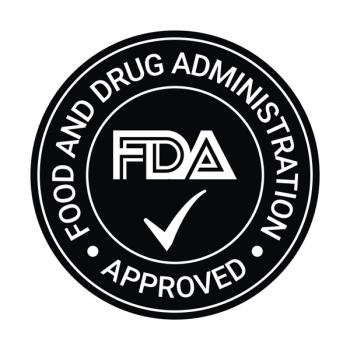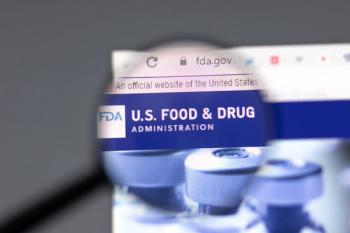
Cleared and Graded: Modernizing the 510(k) Pathway
Due to increasing complexity of modern technology, FDA should consider updating its 510(k) process.
Devices are not drugs. That is to say, the requirements for safe and effective drugs and devices look very different. Most devices don't have a chemical action on the body and aren't dependent upon being metabolized for their actions. Thus, their risks and the ability to predict the risks of a new device are much more controlled. For the highest-risk products, such as new heart valves, a thorough evaluation process requiring preclinical data and clinical testing to ensure they are safe and effective prior to marketing is appropriate. However, for devices with low or predictable risk, requiring their pathway to market to have the same level of scrutiny would be inappropriate. What is an appropriate level of review for devices of predictable risk? The U.S. Food and Drug Administration’s (FDA) 510(k) process allows for the efficient evaluation of a device with a known risk profile by comparing it to a predicate device that has already been approved or cleared.
Growing complexity
However, since the FDA began the 510(k) submission process in 1976, the increasing complexity of technology used in medical devices and the sheer weight of predicate devices invite a renewed look at the process. The FDA has been making continual efforts to strengthen and modernize the program. But is it enough? Could more be done to both support the development of useful medical devices as well as protect public health and safety?
Risk assessment
The process for bringing a new device into the medical armamentarium when there are significant risks includes preclinical testing and clinical studies. With that level of effort involved, it makes sense to ensure with high confidence that the risks are identified and the benefits from the device outweigh those risks. At the other end of the risk spectrum are devices that fit a class of identified device type that need merely to register with the FDA, an appropriately low burden for low risk. Almost everything in between goes through the 510(k)process. From 1987 to 2020, the annual number of clearances for 510(k) devices ranged from 2,804 to 5,762 (the median being 3,404), as compared to a median of 32 novel devices granted premarket approval.1 This efficient process allows for advancements in benefit, such as an improvement in implantable plates and screw technology, while recognizing that most plates or screws are similar.
To be granted clearance to market a new device through this process, manufacturers must send a 510(k) submission to the FDA which demonstrates that their device is ‘substantially equivalent’ to another legally U.S.-marketed device. Substantial equivalence is not necessarily just the specifications that match another device, but usually includes performance and sometimes clinical data if applicable.2 Substantial equivalence means that the new device is as safe and effective as the predicate; if, in comparison, the new device has the same intended use as the predicate; and any new technological characteristics do not raise different questions of safety and effectiveness.3 Provided the claim is not rejected, the manufacturer will receive a letter from the FDA stating that the device can be marketed in the U.S. for a specific indication.
Now, the devil is in the details, and no process is without opportunities for improvement. Several of the issues with the 510(k) process today relate to its very nature. Reliance on being substantially equivalent and proving device performance with limited to no clinical data ignores the potential for unknown clinical issues.4 That puts the burden of proof on a review of substantial equivalency rather than actual clinical safety and utility.5 Further, the lack of clinical testing could go to predicate devices cleared on predicate devices and so on down a tree of devices back to some distant relative.6 The technology employed in today’s devices is much more complex than in the past. The FDA notes that the average page count of a 510(k) submission has doubled to over 1,000 pages since 2009.7 Further, the predicate is proposed by the submitter, even though there may be reasons why another predicate might be more appropriate. Similarly, the standards to which the device’s and predicate’s performance are held, may not be the best standards to consider for the current application of the device.
Regulatory updates
The FDA has kept pace with the rapidly evolving technology and has made substantial and meaningful modernization efforts. Laws passed in 1997 and amended in 2012 created the De Novo classification which allows devices of low to moderate risk without a substantial equivalent to be classified as class I or II and marketed. In 1998, the 510(k) process was split into Traditional, Special, and Abbreviated types: Special to facilitate changes to a manufacturer’s already marketed device; Abbreviated which may not require test data, and Traditional, for all other types. The FDA also published the guidance “Refuse to Accept Policy for 510(k)s”8 to help ensure complete submissions. All these factors help streamline the process for lower-risk devices and focus attention where it is needed. Further, the FDA has addressed each of the known issues above.
First, to address the issue of clinical data’s importance, the FDA published “Recommendations for the Use of Clinical Data in Premarket Notification [510(k)] Submissions.”9 This provides recommendations about when clinical data may be needed and when clinical data may be the least burdensome approach. Next, as part of the Abbreviated type, the Safety and Performance Based Pathway10 was introduced for certain, well-understood device types. This may help to address the tree of predicates from the distant past, while reducing the burden of review for common, well-understood device types. The FDA’s guidance “Best Practices for Selecting a Predicate Device to Support a Premarket Notification [510(k)] Submission”11 recommends four best practices for choosing a predicate. It should be cleared with well-established methods, meet or exceed known safety and performance parameters after a review of existing data, be without unmitigated use-related or design-related safety issues, and without an associated design-related recall.
Market impact
At the same time, there are still areas left to address. First is the fact that introducing any significant change would rock a very large boat. The global medical devices market was valued at $512.29 billion in 2022 and is projected to grow from $536.12 billion in 2023 to $799.67 billion by 2030.12 Existing cleared devices and device pipelines’ reliance on the 510(k) process to enable this growth is only one aspect of the pressure. The FDA staff and time for review is a burden on taxpayers as well as device manufacturers. The Medical Device User Fee accounts for a substantial, but incomplete, 43% of FDA funding related to the review of medical devices.13 Substantially increasing the review efforts would cost substantially more. Moreover, the investigations required to collect that clinical data represent an enormous undertaking in terms of time and money as well as burdens on participants. A robust post-market review process would supplement data when predicted risk did not match reality; however, the FDA’s ability to monitor device performance is limited, and heavily reliant on voluntary reporting which may be inadequate.14
Additional measures may come from outside of the regulatory agencies. Manufacturers have a vested interest in ensuring they have data to show that their products are safe and effective. The expense and burden of recalls or litigation notwithstanding, the people who work for device manufacturers have family and loved ones who may use these devices and can put them through the “Would you put that in your Mom?” test.15 True, news headlines provide examples of bad actor scenarios. While these are valuable examples that confirm the need for continued vigilance, they are a rarity. The industry could and often already does go above the required standards for regulation. Voluntary consensus standards that the FDA vets and lists are already recognized and followed, and companies bring in clinical experts to advise on appropriate tests. This could be taken one step further with leaders in their respective markets publishing best practices and specifics for their device line. For example, the reference standard for an orthopedic nail is a four-point stress test against the side of the nail.16 But that is not how a nail is stressed in the human body. Furthermore, a nail would show clinical signs before complete failure, so requiring three months of constant stress testing to find the failure level is a waste of resources.
Conclusion
With the constant pressure to improve and address past failures, appropriate device review balances the efficiency of oversight and public protection. The FDA is making strides to set the pace of this advancement with new guidance and pathways. Manufacturers have the biggest responsibility to use the current system appropriately, not take advantage of any shortcuts, and even go further by being their own best yardstick. They can help drive the industry towards a differentiator that exceeds regulatory standards.
Currien MacDonald is Medical Chair Director at WCG and contributes to biosafety reviews for WCG’s institutional biosafety committee.
References
- Darrow JJ, Avorn J, Kesselheim AS. FDA Regulation and Approval of Medical Devices: 1976-2020. JAMA. 2021 Aug 3;326(5):420-432. doi: 10.1001/jama.2021.11171. PMID: 34342614.
- https://www.fda.gov/medical-devices/premarket-notification-510k/content-510k. Accessed 12 May 2024.
- https://www.fda.gov/medical-devices/premarket-submissions-selecting-and-preparing-correct-submission/premarket-notification-510k. Accessed 6 May 2024.
- Zuckerman D, Brown P, Das A. Lack of publicly available scientific evidence on the safety and effectiveness of implanted medical devices. JAMA Intern Med. 2014 Nov;174(11):1781-7. doi: 10.1001/jamainternmed.2014.4193. PMID: 25265047. https://pubmed.ncbi.nlm.nih.gov/25265047.
- Moshkovits I, Shepshelovich D. Emergency Use Authorizations of COVID-19–Related Medical Products. JAMA Intern Med. 2022;182(2):228–229. doi:10.1001/jamainternmed.2021.7257 https://jamanetwork.com/journals/jamainternalmedicine/fullarticle/2787205.
- Dhruva, S. S., Bero, L. A., & Redberg, R. F. (2018). Strength of study evidence examined by the FDA in premarket approval of cardiovascular devices. JAMA Internal Medicine, 178(6), 856-858.
- https://www.fda.gov/medical-devices/medical-devices-news-and-events/cdrh-statement-fda-continues-take-steps-strengthen-premarket-notification-510(k)-program. Accessed 5 May 2024.
- https://www.fda.gov/media/83888/download. Accessed 5 May 2024.
- https://www.fda.gov/media/171837/download. Accessed 5 May 2024.
- https://www.fda.gov/medical-devices/premarket-notification-510(k)/safety-and-performance-based-pathway. Accessed 30 Apr 2024.
- https://www.fda.gov/media/171838/download. Accessed 5 May 2024.
- https://www.fortunebusinessinsights.com/industry-reports/medical-devices-market-100085. Accessed 28 Apr 2024.
- Darrow JJ, Avorn J, Kesselheim AS. FDA Regulation and Approval of Medical Devices: 1976-2020. JAMA. 2021 Aug 3;326(5):420-432. doi: 10.1001/jama.2021.11171. PMID: 34342614.
- Dhruva, S. S., Bero, L. A., & Redberg, R. F. (2019). Strength of study evidence examined by the FDA in premarket approval of cardiovascular devices. JAMA Internal Medicine, 179(4), 567-573.
- Si Jana, personal communication.
- Si Jana, personal communication.
Newsletter
Lead with insight with the Pharmaceutical Executive newsletter, featuring strategic analysis, leadership trends, and market intelligence for biopharma decision-makers.





